A Well Thought Out Scream By James Riordan: America Behind Bars
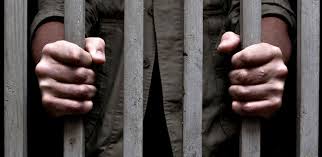
The numbers are staggering. While the United States has only 5% of the world’s population, it has 25% of the world’s prison population – that makes America the world’s largest jailer. America Behind Bars. Since 1970, our prison population has risen a staggering 700%. Today one in every 99 adults in the United States are living behind bars which is the highest rate of imprisonment in American history. One of every 31 adults are under some form of correctional control, counting prison, jail, parole and probation populations.
 Our criminal justice system should keep communities safe and treat people fairly, regardless of the color of their skin or the size of their bank account. In order for our system to do a good job, it must be cost-effective by using our taxpayer dollars and public resources wisely, in an evidence-based rather than fear-based manner. But our criminal justice system is not doing a good job. It has failed on every count: public safety, fairness, and cost-effectiveness.
Our criminal justice system should keep communities safe and treat people fairly, regardless of the color of their skin or the size of their bank account. In order for our system to do a good job, it must be cost-effective by using our taxpayer dollars and public resources wisely, in an evidence-based rather than fear-based manner. But our criminal justice system is not doing a good job. It has failed on every count: public safety, fairness, and cost-effectiveness.
One of the proposed solutions for this has only made the situation worse. The for-profit prison industry sells itself as a cost-effective option for cash-strapped states, but according to a new study from the University of Wisconsin, privatized prisons are keeping inmates locked up longer in order to boost profits. Researcher Anita Mukherjee studied eight years of data from Mississippi, which has one of the highest incarceration rates in the country, and found that private prisons there doled out twice the amount of infractions against inmates, lengthening their sentences by an average of two or three months. The extra time, Mukherjee found, adds up to an increase of about $3,000 in additional costs per prisoner. Mukherjee also noted that inmates housed in private prisons were more likely to wind up back in the system after being released—despite industry claims of lower recidivism rates.
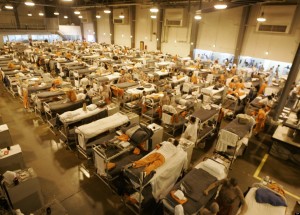
The study, which compares the length of stays in private and public prisons, is not the first to highlight strategies undertaken by the private prison industry to raise returns for stockholders. Last year, Christopher Petrella, a researcher at the University of California-Berkeley, accused the Corrections Corporation of America of including provisions in its contracts with governments to keep the most costly inmates—those with health issues—from being transferred to its prisons. Through open records requests, Petrella found there were 14 different exclusion criteria, including disabled or elderly inmates, those who were HIV-positive, or anyone with “sensitive medical conditions and/or high-risk diagnoses.”
Today, the $5 billion private prison industry houses close to 20 percent of federal inmates. Looking specifically at California prisons, Petrella highlights how health expenditures are among the largest costs, second only to security, and account for 31 percent of the overall budget. But, private prisons set up contracts that say they only will house the youngest, healthiest—and cheapest—prisoners. These details, Petrella writes, failed to make their way into a Temple University cost analysis often cited by the industry as proof that privatization produces cost savings. The economists behind the study were funded by three of the largest prison companies in the United States—a fact they failed to disclose when the study was first published.
Other studies have had similar findings: An analysis by the Arizona Department of Corrections in 2011 found that most prisoners were no less costly when housed in private prisons, and that some cost up to $1,600 more each year than those in public prisons. A cost analysis by the University of Utah in 2007 showed cost savings from private prisons were minimal at best.
Between 2000 and 2010 the number of inmates serving sentences in private prisons doubled. Today, the $5 billion industry houses close to 20 percent of federal prisoners and about 7 percent of state prisoners, and private prisons are increasingly being used as immigration detention centers.
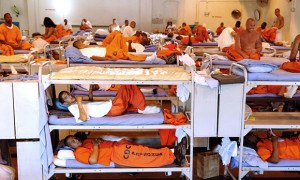
You know our country is on the wrong track when citizens’ freedom becomes bad for business and the states are siding with businesses by locking up more citizens. A real downside to the private prison idea is that in order for the money to be made the prisons must be filled up. Like a hotel, the more vacant rooms you have the more money you are losing. That doesn’t exactly bode well for the idea of rehabilitation which is supposed to be the primary focus of incarceration. And it doesn’t help reduce recidivism when the people at the top of the system are hoping for a good amount of repeat business.
As if this concept wasn’t enough of a problem, many states are now under pressure from private prison companies to fill more beds. .States aren’t filling enough beds for the private prison companies, so now, taxpayers are being sued because there aren’t enough criminals. In a nutshell, the private prisons are telling the states that they’d better start throwing more people in prison or they’ll sue. These aren’t frivolous lawsuits, either. Several government agencies knowingly signed contracts with private prison companies that guarantee a minimum occupancy or quota. In fact, nearly 2/3 of the contracts signed have such quota clauses. In California, for example, there is a guarantee of 70 percent occupancy and in Arizona, nearly 100 percent.
If crime goes down, which it has been, either the taxpayer pays after the lawsuits or police start arresting people and courts start convicting people for the pettiest crimes possible. Judges will also be encouraged to hand down extra long sentences because many of the prison contracts specify a certain length of time. Unfortunately, there is no evidence that more incarceration has anything to do with the drop in crime. There is also no evidence that private prisons save taxpayers money. In fact, it’s far more likely that they are costing the taxpayers.
Why haven’t we heard more about this? Why aren’t people up in arms about such a deterrent to justice. Well, basically, it’s because Prisoners are our forgotten citizens. In fact, it can be argued that even ex-convicts are only partial citizens; many lose their right to vote, are barred from getting a student loan and their right to own a gun and many on parole or probation lose their 4th and even 1st amendment rights. The truth is that even if you’ve “served your time,” you never escape the label. A felony conviction often will keep you from getting a job which can make it impossible for people with felony convictions to pull them-selves out of poverty. And many who end up in prison were living in chronic poverty to begin with.
 Private prisons often amount to legalized slavery. Many military supplies are made in private prisons and the prisoners are paid pennies an hour – money that is put right back in the private prison company’s coffers when it’s spent at the prison commissary. When it comes to large prison populations, many say the major cul-prit is the so-called War on Drugs. There were fewer than 200,000 Americans behind bars as recently as the mid-70’s. Then, a racially-tinged drug hysteria swept our nation, and we saw a wave of increasingly militant policing that targeted communities of color and poorer neighborhoods.
Private prisons often amount to legalized slavery. Many military supplies are made in private prisons and the prisoners are paid pennies an hour – money that is put right back in the private prison company’s coffers when it’s spent at the prison commissary. When it comes to large prison populations, many say the major cul-prit is the so-called War on Drugs. There were fewer than 200,000 Americans behind bars as recently as the mid-70’s. Then, a racially-tinged drug hysteria swept our nation, and we saw a wave of increasingly militant policing that targeted communities of color and poorer neighborhoods.
Well, now there’s a good reason the country has little interest in ending the war on drugs or the war on immigration. Ending those wars would put private prisons out of business. Violent crimes are down overall, so how does the United States keep prisons stocked instead? Amplifying the war on drugs: there are now 11 times as many people in jail for drug convictions than there were in 1980, constituting 50% of the prison population. Longer mandatory minimum sentences also keeps the inmates in longer. Most people incarcerated for drug charges are non-violent, have no prior record, and are addicts rather than major drug-traffickers.
Nearly half of all detained immigrants are held in privately owned facilities. The fact that ICE (Immigration and Customs Enforcement) has stepped up its game to detain more undocumented immigrants – about 400,000 each year – has actually increased the need for private systems as most detainees will linger in the system waiting for court dates for months if not years.
With “mandatory minimums” and “three strikes out” laws, the number of Americans behind bars soon ballooned to nearly 2.5 million today, despite widespread evidence that locking people up doesn’t make us safer. Unconscious bias and cultural stereotypes have also lead to discriminatory enforcement of the laws – from who gets pulled over to where police conduct drug sweeps.
Even though Blacks, whites, and Latinos use drugs at similar rates, people with black and brown skin are more likely to be pulled over, searched, arrested, charged with a crime, convicted, and sent to jails and prisons where they can be subject to some of the worst human rights abuses. As a result, black people incarcerated at a rate five times that of whites, and Latinos incarcerated at a rate double that of white Americans.
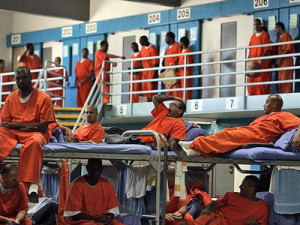
There has been some backlash, but not enough. Idaho ended its ties with the largest private prison company, Corrections Corporation of America. Even Texas has closed down some private prisons, as has Mississippi. Other states, though, are getting worse. Colorado, for example, shut down five state-run prisons and sent the prisoners to private facilities. In the meantime, Colorado taxpayers are still paying for the upkeep on the state facilities.
All of this means a lot of potential human talent is going to waste. We’re spending a fortune locking people up who could fuel our economy and build strong communities, in some cases just to increase the profits of private prison corporations.
So what do we do?
First, enact smarter sentencing laws that end mandatory minimums and transform the way we treat people who enter the criminal justice system. Instead of prisons and jails, we need well-paying jobs, and to invest in proven and cost-effective alternatives to incarceration, like job training and mental health and drug treatment programs.
Second, stop the militarized policing and end discriminatory policing practices such as “stop and frisk” and “broken windows” that disproportionately target communities of color.
Third, stop building new jails, start closing some existing ones, and begin to invest in schools, public transit, and housing assistance or local jobs programs. States are spending more and more on prisons, while cutting funding for schools. That’s crazy.
Finally, “ban the box” – the box on job applications that asks whether you have ever been convicted of a felony on a job application. Already, dozens of states cities, and counties have passed bills requiring that employers consider what you can do in the future, not what you might have done in the past.
Instead of locking people up unjustly, and then locking them out of the economy for the rest of their lives, we need to stop wasting human talent and start opening doors of opportunity – to everyone.
___
James Riordan .is the author of thirty-three books, including Break On Through : The Life & Death of Jim Morrison (a New York Times Bestseller), Stone,: The Biography of Oliver Stone , The Coming of the Walrus and The Bishop of Rwanda. He has written for Rolling Stone, Circus, Cream, Crawdaddy and other national magazines and won nine national awards. He is also widely recognized for his ministry work with teenagers.


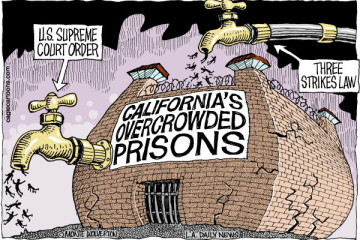

No Comment